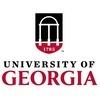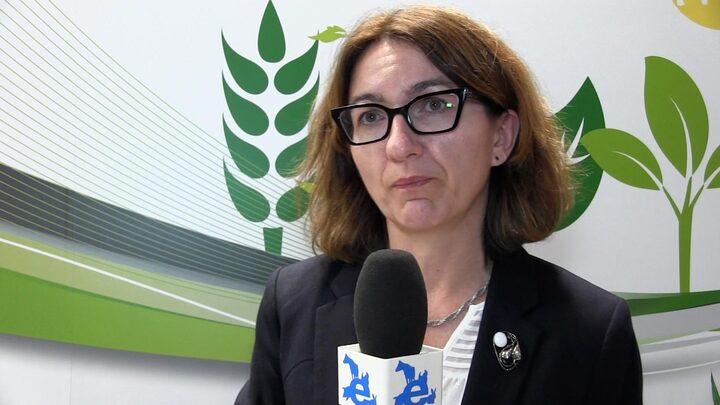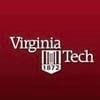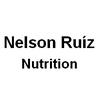Check out what is new in Poultry Industry
Find the best technical articles, forums, and videos on Poultry Industry at Engormix. Enter now and interact with the world's largest agricultural social network.
.jpg&w=3840&q=75)
Brian Fairchild (University of Georgia) talks about common misconceptions regarding this system, possible overuse and its impact on litter conditions and poultry welfare, in this interview during IPPE 2023 in Atlanta, USA....
Comments : 1
Recommendations: 0
.jpg&w=3840&q=75)
Brian Jordan (University of Georgia) explains the evolution of his research on dry hydrogen peroxide and the latest results presented at IPPE 2023 in Atlanta, USA....
Comments : 0
Recommendations: 0
.jpg&w=3840&q=75)
Mike Czarick (University of Georgia) explains how this application can help you assess how much you need to ventilate your poultry house, in this interview during IPPE 2023 in Atlanta, USA....
Comments : 0
Recommendations: 1
.jpg&w=3840&q=75)
Sebastian Decap (Plantae Labs SpA) comments on this disease and the process of encapsulation for this additive so it can reach the ceca, in this interview during IPPE 2023 in Atlanta, USA....
Comments : 0
Recommendations: 0
.jpg&w=3840&q=75)
Craig Coon (University of Arkansas) shares his knowledge regarding this subject, focusing on energy, proteins and amino acids, as well as the advances made in the industry throughout the years, in this interview during IPPE 2023 in Atlanta, USA....
Comments : 6
Recommendations: 5
.jpg&w=3840&q=75)
Daniel De Leon (Texas A&M University) explains his research presented on the importance of Vitamin A in broiler diets, in this interview during IPPE 2023 in Atlanta, USA....
Comments : 0
Recommendations: 0
.jpg&w=3840&q=75)
Mike Persia (Virginia Tech) discusses differences in feeding with fine and coarse particles and their impact on gut health and performance, in this interview during IPPE 2023 in Atlanta, USA....
Comments : 0
Recommendations: 0
.jpg&w=3840&q=75)
Mike Persia (Virginia Tech) talks about the benefits of Direct-Fed Microbials (also Sulfur Amino Acid supplementation) to help manage the adverse effects of heat stress, in this interview during IPPE 2023 in Atlanta, USA....
Comments : 69
Recommendations: 9
.jpg&w=3840&q=75)
Fausto Solis (Wenger Feeds) explains the benefits of hemp seed cake in poultry production, in this interview during IPPE 2023 in Atlanta, USA....
Comments : 3
Recommendations: 3
.jpg&w=3840&q=75)
Tom Tabler (The University of Tennessee) discusses how to manage poultry litter and effectively use ventilation to avoid health and welfare issues, in this interview during IPPE 2023 in Atlanta, USA....
Comments : 1
Recommendations: 0
.jpg&w=3840&q=75)
Tom Tabler (The University of Tennessee) explains why neglecting pH or the presence of bacteria in the water can prove costly, in this interview during IPPE 2023 in Atlanta, USA....
Comments : 0
Recommendations: 0

Is sustainable food production one of the greatest global challenge the animal industry face? Faazi Adam, Director Sustainability at Evonik Animal Nutrition, speaks about it in this interview at IPPE 2023
...
Comments : 0
Recommendations: 1
.jpg&w=3840&q=75)

Trends and challenges in Poultry Production: Jonathan Cade, President of Hy-Line International
Suggested link
.jpg&w=3840&q=75)
Nelson Ruiz (Nelson Ruiz Nutrition) highlights the relevance of quality parameters in times of scarcity or supply chain issues, in this interview during IPPE 2023 in Atlanta, USA....
Comments : 0
Recommendations: 0
.jpg&w=3840&q=75)
Diego Martínez (University of Arkansas) discusses the different models to measure and predict nutrition's impact on performance, in this interview during IPPE 2023 in Atlanta, USA....
Comments : 0
Recommendations: 0
.jpg&w=3840&q=75)

Introducing Afla-V ONE: Fast, precise aflatoxin detection for complete feeds and pet foods
Suggested link
.jpg&w=3840&q=75)
Nelson Ruiz (Nelson Ruiz Nutrition) explains the relevance of trypsin and chymotrypsin inhibitor activity, in this interview during IPPE 2023 in Atlanta, USA....
Comments : 0
Recommendations: 0
.jpg&w=3840&q=75)
Garret Ashabranner (University of Georgia) explains the different issues that can be identified by using water meters, in this interview during IPPE 2023 in Atlanta, USA....
Comments : 0
Recommendations: 1
This past week, there has been an uptick in social media videos and news stories perpetuating false claims about commercial chicken feed and its impact on the availability and price of eggs. To better understand how diet relates to a hen’s egg output, I spoke with our resident animal nutritionist, Paul Davis, Ph.D. Davis has a doctorate in animal nutrition and the added benefit of being able to tap into fellow nutrition experts’ knowledge on the American Feed Industry Association...
Comments : 0
Recommendations: 0
_1.jpg&w=3840&q=75)
Interested in learning more about what drives VICAM innovation? Dr. Lingyun Chen, VICAM's Director of R&D, shares about the unique requirements for food and agricultural producers and processors to accurately detect mycotoxins outside of the traditional laboratory environment....
Comments : 0
Recommendations: 0
.jpg&w=3840&q=75)
Will Strickland (University of Georgia) comments on his research on water consumption and potential issues that can be prevented by monitoring it, in this interview during IPPE 2023 in Atlanta, USA....
Comments : 0
Recommendations: 0



00167-168.jpg&w=3840&q=75)



























.jpg&w=3840&q=75)






